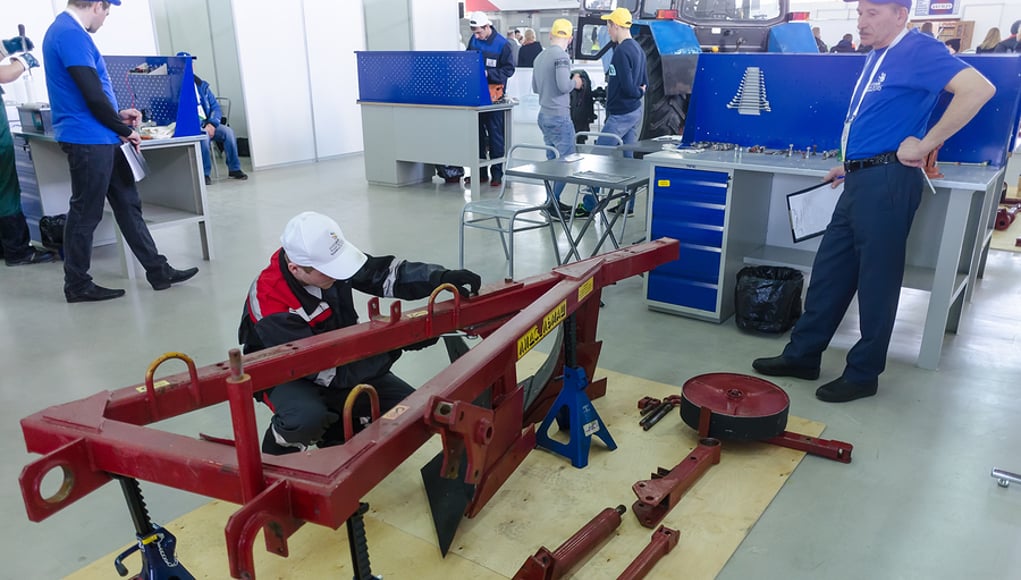Getting Clearer: Career and Technical Education

It was a whole party or what popular culture would say, “a whole mood.” In the parking lot after graduation, a recent graduate with ROTC honors and Wastewater Management certifications (a certification unique to this graduate) celebrated with his large family. He left high school with the grades and the networks to choose college, career, or the military. With his Wastewater Management certification, he chose to start his career as an 18-year-old making $45,000 and a hefty benefits package.
To that young man, and many others, college and career are not two separate entities. “There’s no such thing as college and career readiness. It’s all career readiness. Some careers require a four-year degree and beyond and some don’t.” Those words from my former director constantly echo through my head every time there is a discussion around Career and Technical Education (CTE). Too often CTE is put into a bucket for “kids not going to college,” but now the tides are shifting and the value of having hands-on experience combined with rigorous academic knowledge is becoming the priority.
CTE is a form of education for high school students that allows them to gain industry experience, skills, and credentials before graduating. CTE looks different in every school district. In some areas, students leave their high school for a half-day program and travel to a career center to pursue interests in automotive, culinary, health care, emergency medicine, and other professional areas. In other districts, students remain in their high schools to pursue those interests and others such as graphic design, engineering, architecture, and computer science. Students that engage in a CTE course of study are well prepared for postsecondary career opportunities, regardless if those start in an apprenticeship program, on a college campus, or in the military.
Students in CTE courses also take advantage of the opportunity to earn CTE-embedded college credit from their local community colleges and universities. By accessing courses such as Project Lead the Way, postsecondary institutions are working with local school districts to ensure that students have options and that the hurdles are removed to create greater equity and access for all students. School districts are also working to pair CTE and Advance Placement together in courses such as engineering, computer science, pre-law, and cybersecurity. Instead of leaving high school with a piece of paper, students are now equipped with the academic knowledge, transferable skills and industry credentials to navigate future opportunities. According to the United States Department of Education, eight years after graduation, students who participated in CTE programs had higher median incomes than students without a CTE focus.
For students, the future earnings are important, but engaging in their passions is the biggest draw to CTE. They see participating in the different programs as a win-win for them and their families. Families get excited when they see their child light up about what happened at school and students get excited to share their experiences, the professional connections made, and the assessments passed. Admittedly, students and parents are sometimes skeptical about dedicating part of the educational day to learn in CTE spaces, but the draw of project-based learning, scholarships, and job opportunities entice students to take advantage of a different learning opportunity.
I remember meeting an engineering student and understanding the importance that her family played in her life. She started life with severe health problems and was given the prognosis of not having long to live. Using the fierce determination to not only fight for her life, but also to succeed as a young lady in a predominantly male field of engineering, made her stand out. She got stronger, mentally and physically, dug into her love of figuring things out, and signed up for engineering and agriculture classes. Although she had to endure other life struggles, she leaned on her love for her CTE classes to give her purpose. By connecting her interests to her life lessons, she learned the importance of being a steward of the earth and using that to make life better for everyone. As a result of her mastery of 21st Century skills of resilience, accountability, problem solving, and more mixed with her passion for STEM, she earned internships with large corporations. Now enrolled in college to continue working on becoming a STEM champion, she is another example of how CTE looks different for everyone.
It’s important to remember that students are all unique and need a personalized plan of study that truly gives them the chance to chart their own course. The interests are varied and students deserve space to explore their interests and have the opportunity to fail. CTE allows students to create, reimagine, collaborate, and critically think their way through problems and projects. They quickly realize the need to think on their feet and lead others through challenging situations. They learn to be ok with not achieving success the first time but learn how to become a leader, be flexible, and use their social skills to help them move forward.
CTE bridges the gap between high school and postsecondary options. There is a large skills gap in the United States and high school students are able to fill in the gaps when CTE is prioritized in schools. By removing the rhetoric that college is the only pathway to success, students will be proud to channel their hands-on passions into careers. Helping students understand that learning is a continuous process throughout their careers allows them to know it’s ok to have ideas, it’s ok to work on those ideas, and it’s ok to go out and build their dreams.
The purpose of school is not to teach students how to get jobs, rather right after high school or after college. Our purpose, as educators, is to teach them how to think, how to be global citizens, and, as my previous student said, “How to be a steward of the earth.” Students are looking for more as they have access to lots of information and see how people should and should not be treated. They have a voice and they aren’t afraid to use it. They are no longer willing to tolerate the “traditional” way of life and their education should reflect the world around them. They have choices in all they do and education should not be the exception. Let them learn what they want, and let’s celebrate their choices along the way.
For more, see:
- ConnectEd Links Learning to Career Pathways
- Crossing the Skills Gap Between Industry 4.0 and CTE Programs
- How Career and Technical Education Can Inform Competency-Based Learning
Stay in-the-know with innovations in learning by signing up for the weekly Smart Update.








0 Comments
Leave a Comment
Your email address will not be published. All fields are required.